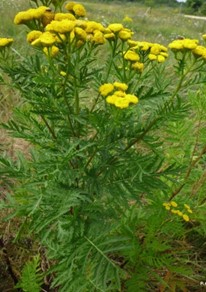Area
Moldova, Ukraine, Belarus, Russia All except the Far North and the Urals, the desert districts along the lower Volga occurs on the ground. Mainly on the side of the road, close to residential areas grows in places, meadows, forest edges and waterways
Botanical description of the plant
A perennial herb, 50-150 cm tall, with a distinctive odor. Stems erect, branched, hairless or slightly hairy. The leaves are simple, sessile, dark green on the upper side, gray-green on the lower side. The leaves at the bottom of the stem are banded, the ones at the middle and top while it was unoccupied and placed in a row at the base. The flowers are yellow, in a basket accumulates and forms a thyroid inflorescence. The fruit is an elongated pistachio. The plant blooms throughout the summer.

Medicinal properties
A simple dastarbosh flower for worm infestation as well used in the treatment of liver and intestinal diseases. Dorivor preparations. Drip. Tanatsexol (the sum of flavonoids and phenolic carboxylic acids obtained from the inflorescence is released in the form of powder or tablets). The drug is used in medicine as a herbal remedy. The product is used in diseases of the liver (cholecystitis, hepatitis, etc.) are used in tea collections and Zdrenko collections.
Growing technology
Grows well in all soils of Uzbekistan. Given that its root system is well developed, it is advisable to plant it in eroded soils. Protects soil from erosion. Normal dastarbash is planted at a depth of 25-28 cm by feeding it with local fertilizers and superphosphate before plowing in the fall.
will be driven. In early spring, the lands are stormed, leveled with a rake, and cleared of weed debris. Seeds are sown in early spring when the soil temperature is 15–17 ° C, along a line, with row spacing of 60 cm. Since its seeds are small, it is sown by mixing it with rotten manure or sand for a flat planting. Seeds are sown at a depth of 0.5 cm. 7-8 kg of seeds per hectare is spent. Seeds sown in late March germinate in 10–12 days. Grasses are obtained by cultivation with the emergence of 3–4 true leaves. 1-2 seedlings are left in each hive. The distance between the nests should not be less than 10–12 cm. The common weed competes easily with weeds and in the second year completely squeezes them out.





